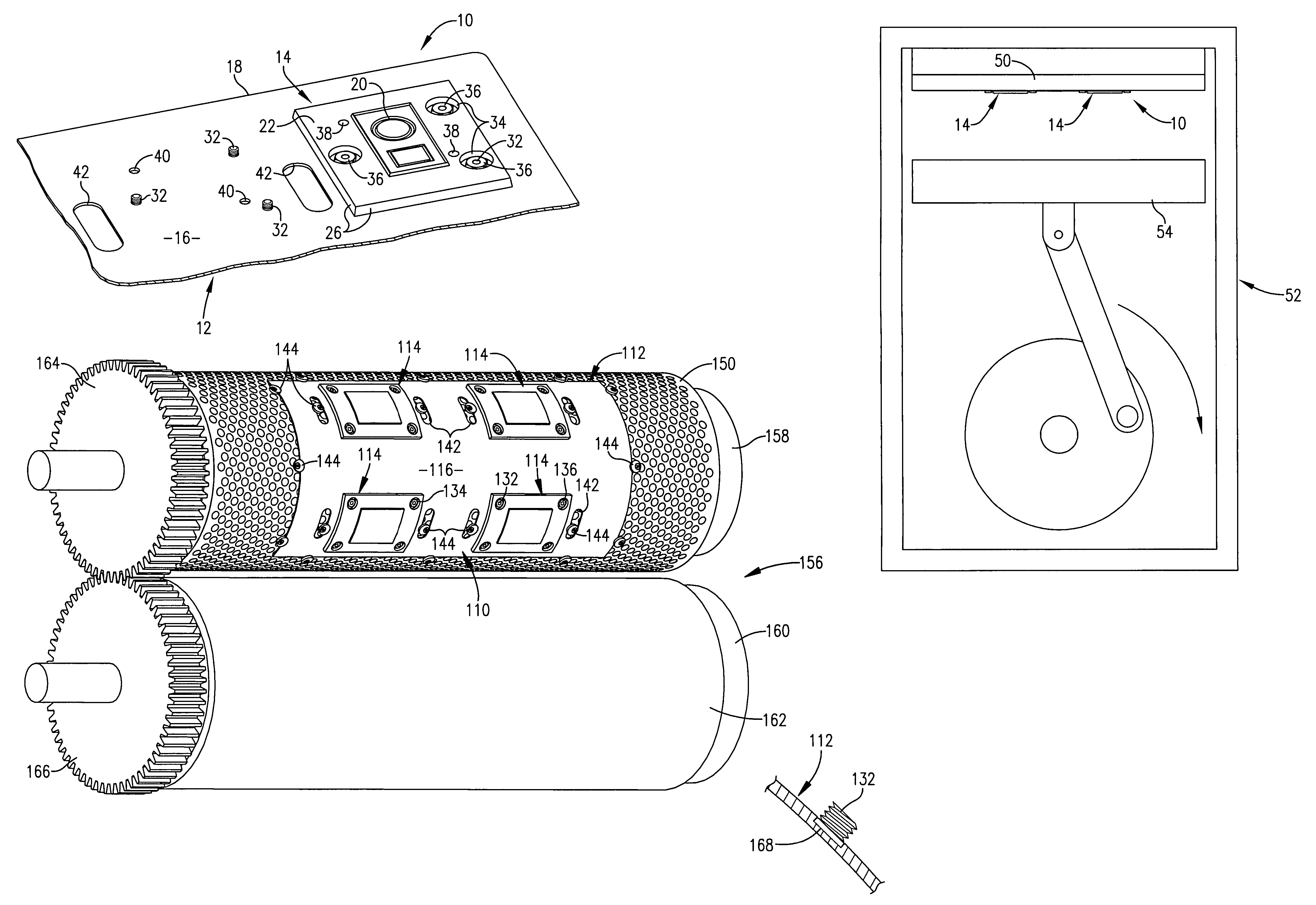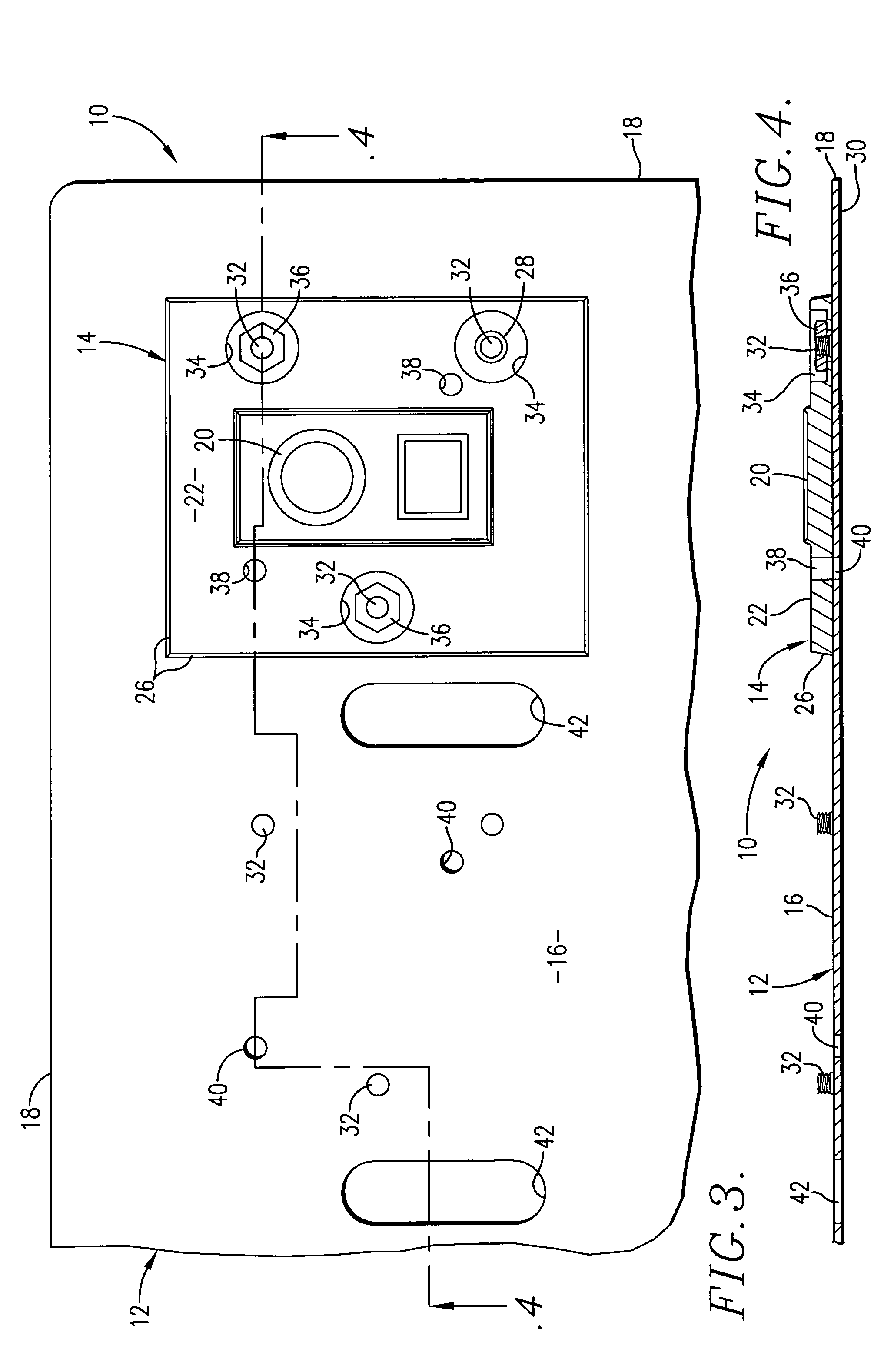Graphic arts die and support plate assembly
a technology of support plate and die, which is applied in the direction of manufacturing tools, cutting tools, shaping tools, etc., can solve the problems of pressing chase, high cost of press chase, and high time consumption of foil stamping, embossing, or die cutting dies on apertured chases, flat or cylindrical,
- Summary
- Abstract
- Description
- Claims
- Application Information
AI Technical Summary
Benefits of technology
Problems solved by technology
Method used
Image
Examples
example
[0072]In accordance with the present invention the support member 12 is preferably a steel plate in which the die receiving surface 16 has been shaved in a milling machine such that the plate thickness is from about 0.030 in. to about 0.100 in. thick, more preferably from about 0.040 in. to about 0.090 in., and most preferably 0.060 in. The thickness of the die plate 14 should be in the range of from about 0.150 in. to about 0.220 in., more preferably from about 0.160 in. to about 0.210 in. and most preferably about 0.190 in. The overall thickness of assembly 10 is most preferably about 0.250 in., in order to comply with industry practice in North America that a foil stamping, embossing or die cutting plate should be no more than about 0.250 in. thick. In the instance of foreign press operations, the total overall thickness of assembly 10 should typically be no more than about 7 mm. in accordance with foreign foil stamping, embossing and die cutting industry practice. In lieu of bei...
PUM
| Property | Measurement | Unit |
|---|---|---|
| thickness | aaaaa | aaaaa |
| time | aaaaa | aaaaa |
| thickness | aaaaa | aaaaa |
Abstract
Description
Claims
Application Information
 Login to View More
Login to View More - R&D
- Intellectual Property
- Life Sciences
- Materials
- Tech Scout
- Unparalleled Data Quality
- Higher Quality Content
- 60% Fewer Hallucinations
Browse by: Latest US Patents, China's latest patents, Technical Efficacy Thesaurus, Application Domain, Technology Topic, Popular Technical Reports.
© 2025 PatSnap. All rights reserved.Legal|Privacy policy|Modern Slavery Act Transparency Statement|Sitemap|About US| Contact US: help@patsnap.com



